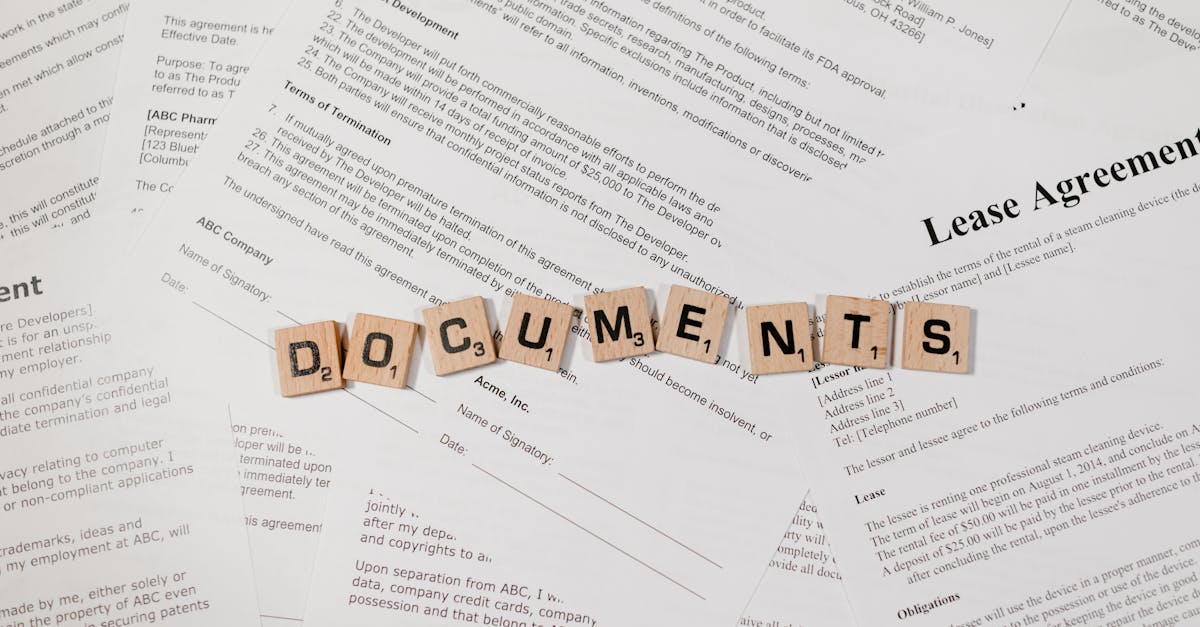
Introduction
Slow approvals cost deals and create legal risk: stalled email threads, unclear ownership, and manual redlines turn routine agreements into weeks‑long headaches and compliance exposures. Modern teams fix this with contract automation and by using document automation to standardize templates, enforce checks, and remove manual handoffs so approvals are faster, consistent, and defensible.
In this post we’ll walk through a practical playbook: identifying common bottlenecks and risk points, building no‑code approval routing (conditional rules and parallel vs. sequential flows), handling exceptions and expedited approvals without losing audit trails, embedding e‑signature and required attestations, implementing reusable template playbooks for NDAs, SOWs, purchase orders and vendor contracts, and enforcing SLAs with automated reminders and reporting for audit readiness. If you run HR, compliance, or legal workflows at a growing organization, you’ll come away with concrete steps to cut cycle time and tighten controls—without writing a line of code.
Typical approval bottlenecks and risk points in contract lifecycles
Common bottlenecks often come from manual handoffs and unclear ownership: requests stuck in email threads, approvers who aren’t identified, and long redline cycles between legal and commercial teams. These slow reviews and delay signing.
Key risk points include inconsistent templates, missing compliance checks (privacy, sanctions, IP), incorrect financial terms, and unsigned amendments. Data entry errors when copying terms into procurement or billing systems also create downstream risk.
These gaps are exactly what contract automation and contract lifecycle management (CLM) tools aim to close. By removing manual routing, introducing contract review automation, and centralizing templates, organizations reduce cycle time and legal exposure.
Building no‑code approval routing: conditional rules, parallel vs sequential approvals
No‑code routing lets non-technical users build approval logic via visual rules: if/then branching based on contract value, counterparty type, or contract template.
Conditional rules — examples
-
Value thresholds: >$100k routes to finance and VP sign-off.
-
Counterparty risk: flagged vendors require procurement and compliance review.
-
Contract type: NDAs follow a fast lane; SOWs go through technical review.
Parallel vs sequential approvals
-
Parallel approvals shorten time when multiple independent reviewers are needed (legal, finance, product). Use when reviews don’t block each other.
-
Sequential approvals enforce order where one review must inform the next (legal redlines before commercial approval).
Choose the model per playbook. Good CLM software and contract automation tools let you mix models: parallel for low-risk sign-offs, sequential for high-risk agreements.
Handling exceptions and expedited approvals without losing audit trails
Define exception policy with clear guardrails: who can approve exceptions, for what dollar amount, and what supporting documents are required.
For expedited approvals, implement a controlled override flow:
-
Temporary expedited route with defined approvers and a mandatory justification field.
-
Automatic time-limited permissions so elevated access auto-revokes.
-
Require attestations and attach supporting evidence (email approvals, redline snapshots).
Maintain auditability by capturing every action in the CLM: timestamps, user IDs, changed fields, and the reason for exception. This preserves legal defensibility and supports later audits.
Embedding e‑signature and required attestations into approval workflows
Integrate e‑signature solutions directly into approval workflows so the document only reaches signing when all approvals pass. That eliminates manual download/upload steps and mismatched versions.
Best practices:
-
Enforce signer authentication (SSO, two-factor) and capture signer evidence in the transaction log.
-
Embed required attestations (conflict of interest, budget approval) as mandatory form fields before the signature step.
-
Use document automation to populate the final signed document and lock version control when signing starts.
Look for CLM and contract management software with native e-signature or native integrations to popular e-sign providers to keep trails intact and ensure compliance.
Template playbooks: approval flows for NDAs, SOWs, purchase orders and vendor contracts
NDA (Non‑Disclosure Agreement)
-
Playbook: Request → Automated clause check (standard NDA) → Legal quick review → Final approval → e‑signature.
-
Use: Fast-track via template for standard NDAs. See a ready NDA template: https://formtify.app/set/non-disclosure-agreement-3r65r
SOW (Statement of Work) / Service Agreement
-
Playbook: Request & scope intake → Commercial review (pricing) → Technical review (acceptance criteria) → Legal review → Exec approval → Signature.
-
Reference template: https://formtify.app/set/service-agreement-94jk2 and for software projects https://formtify.app/set/software-development-agreement-jm656
Purchase Orders
-
Playbook: Requisition → Budget check → Procurement review → Finance approval → PO issuance (automated to ERP) → Counterparty acknowledgement.
-
Link for purchase templates: https://formtify.app/set/purchase-agreement-5ongq
Vendor & Distribution Contracts
-
Playbook: Vendor onboarding intake → Risk & compliance checks → Commercial terms negotiation → Legal review → Senior sign-off → Signature & contract repository.
-
Use the distribution playbook as a starting point: https://formtify.app/set/distribution-agreement-74034
Each playbook should be implemented as a reusable, automated workflow in your contract automation software so teams aren’t reinventing routing rules each time.
SLA monitoring, escalations and automated reminders to enforce review SLAs
Set measurable SLAs for each contract type: e.g., NDA = 1 business day, SOW = 5 business days, vendor onboarding = 7 business days.
Use the CLM dashboard and contract analytics to monitor adherence and identify bottlenecks. Configure automated reminders at defined intervals (e.g., 24 hours before SLA breach).
Escalation rules should be automatic: if an approver doesn’t act within X hours, notify their manager and optionally route to a backup approver. Capture escalations as events in the audit log.
Combine SLA metrics with reporting to drive continuous improvement and to hold approvers accountable without manual chasing.
Reporting and audit readiness: approval history, version control and signer evidence
Approval history is the backbone of audit readiness. Store a chronological, immutable log of every decision, comment, and action. Include metadata on who reviewed what and when.
Version control must keep every redline and frozen final versions. The CLM should allow side-by-side comparisons and preserve earlier drafts for legal review and e‑discovery.
Signer evidence should include the signed PDF, signature audit trail (IP, timestamp, authentication method), and any attestations or attachments. Exportable reports for audits should include all this data in a portable format.
Good contract management software and contract automation platforms combine these elements so you can demonstrate chain-of-custody, perform spot-checks, and respond quickly to compliance requests.
Summary
Automating approvals removes the friction that turns routine agreements into weeks‑long headaches: standardize templates, enforce conditional routing, embed attestations and e‑signatures, and keep an immutable audit trail so HR, compliance, and legal teams can move faster and stay defensible. By using no‑code workflows you reduce manual handoffs, shorten cycle times, and reduce downstream errors while retaining clear ownership and escalation paths. If you’re responsible for approvals in a growing organization, start with reusable playbooks for NDAs, SOWs, POs and vendor contracts and measure SLAs and escalations to keep improving. Learn more and try practical templates and workflow examples at https://formtify.app
FAQs
What is contract automation?
Contract automation uses software to standardize documents, populate fields, and enforce routing and approval rules so agreements move through review and signature with fewer manual steps. It centralizes templates, captures audit trails, and reduces errors from ad‑hoc edits and email chains.
How does contract automation work?
Most systems let you build no‑code workflows that apply conditional rules (value thresholds, counterparty risk, contract type) to route contracts to the right reviewers. Document automation populates clauses and form fields, integrated e‑signature finalizes execution, and the CLM records every action for reporting and audits.
What are the benefits of contract automation?
Benefits include faster cycle times, fewer manual errors, consistent use of approved language, and stronger compliance through required checks and attestations. You also gain measurable SLAs, automated reminders and escalations, plus robust approval histories for audits.
Is contract automation suitable for small businesses?
Yes—small businesses can get immediate value by standardizing common agreements (NDAs, SOWs, POs) and using no‑code routing to avoid manual bottlenecks. Many vendors offer lightweight plans or templates that scale as your contract volume and complexity grow.
How much does contract automation software cost?
Pricing varies widely—some vendors charge per user or per document volume, while others offer tiered plans with additional features like advanced analytics and integrations. Evaluate costs against the time saved, reduced legal risk, and the value of audit‑ready records; look for trials or pilot programs to validate ROI.





